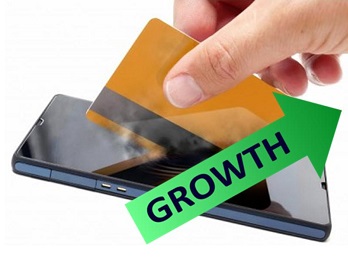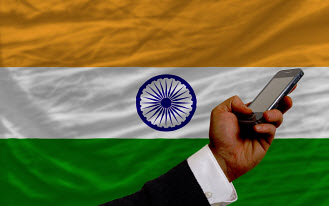BWild |
September 18, 2015
A recent study has forecasted that within a span of 7 years from now, the industry will reach $3 trillion.
The Bank of America Merrill Lynch has now released a report in which it has stated that in a period of 7 year, mobile payments will have grown by 200 times their previous size and will be worth more than $3 trillion.
If this prediction is correct, then wallet and banking apps, retailers, and telecoms are about to benefit greatly.
The report indicated that those who are most likely to benefit from this growth of mobile payments are: banking, telecom, IT, and mobile wallet firms. The report stated that “In India, we consider mobile payments to be both an opportunity (for banks, telcos and new players) and threat (due to dis-intermediation, more to the traditional banks). We estimate the value of mobile banking, estimated at just USD16 billion today to rise 200x in 7 years to more than USD 3,000 billion.”
It is also expected that mobile payments will make up 10 percent of the total transactions in that country.
 This is quite the increase, considering that for the 2015 financial year, smartphone payments made up only 0.1 percent of the total. The report stated that this will be a considerable opportunity for many companies involved in that industry to better their “competitive positioning.” Equally, the report noted that it would mean that there would suddenly be considerable competition making its way into the space that had previously been held by public sector banks.
This is quite the increase, considering that for the 2015 financial year, smartphone payments made up only 0.1 percent of the total. The report stated that this will be a considerable opportunity for many companies involved in that industry to better their “competitive positioning.” Equally, the report noted that it would mean that there would suddenly be considerable competition making its way into the space that had previously been held by public sector banks.
As the payments technology evolves, it is expected that the use of paper cash will have dropped to under 2 percent. The report predicted that the range of alternative methods of payment will lead to a gradual decrease in the use of cash throughout the economy, and that electronic payments will help to ease the lending rates and will encourage growth over time.
It pointed out that among the primary drivers behind the growth of the use of alternative transactions will be in the improvements of mobile payments through greater smartphone penetration. That penetration in India is expected to double in the country’s young population over the next three years. As 60 percent of the population is younger than 35 years old, this represents a massive shift in digital technology use.
The Reserve Bank of India has released a report that indicated that they had expected faster uptake.
According to the most recent Financial Stability Report from the Reserve Bank of India, the uptake of Indian mobile payments and banking has been promising, and yet considerably slower than had been expected over the span of the last three years.
The only banks in the country that can offer services over smartphones and tablets are those that are licensed.
According to the Central Bank in the country, in order to be able to offer Indian mobile paymentshttp://www.mobilecommercepress.com/mobile-banking-rise-australia/853413/, the institutions that wish to provide them to consumers must not only have a license from the Reserve Bank of India, but it must also be supervised by that agency. At the time of the report, there were 78 banks – including a number of them that are regional rural banks, as well as urban co-ops – that had been given the necessary permissions for offering these services.
Many are continuing to see a massive amount of potential from Indian mobile payments.
The Financial Stability Report claimed that using smartphones and tablets for banking offers people in India the greatest opportunity for financial inclusion that has ever been available. The report explained that “Helped by the rapid spread of use of mobile telephony, the growth in mobile banking has been encouraging over last three years.”
That said, it also pointed out that the growth and the overall acceptance of using these smartphone based services as a “channel for accessing banking services” has been much lower than had been anticipated.
Aside from the low awareness and adoption levels, there are also challenges in the industry regarding more rapid growth include the fact that banks aren’t capable of connecting bank account numbers with cell phone numbers, and there is a lack of compatibility between the apps and the devices that people are actually using in the country. There is also a lack of partnerships and models for sharing revenue between network operators and the banks, themselves.
Finally, Indian mobile payments have also been held back by the challenges in obtaining a USSD (Unstructured Supplementary Service Data) channel that is in operation for the purpose.
 This is quite the increase, considering that for the 2015 financial year, smartphone payments made up only 0.1 percent of the total. The report stated that this will be a considerable opportunity for many companies involved in that industry to better their “competitive positioning.” Equally, the report noted that it would mean that there would suddenly be considerable competition making its way into the space that had previously been held by public sector banks.
This is quite the increase, considering that for the 2015 financial year, smartphone payments made up only 0.1 percent of the total. The report stated that this will be a considerable opportunity for many companies involved in that industry to better their “competitive positioning.” Equally, the report noted that it would mean that there would suddenly be considerable competition making its way into the space that had previously been held by public sector banks.

